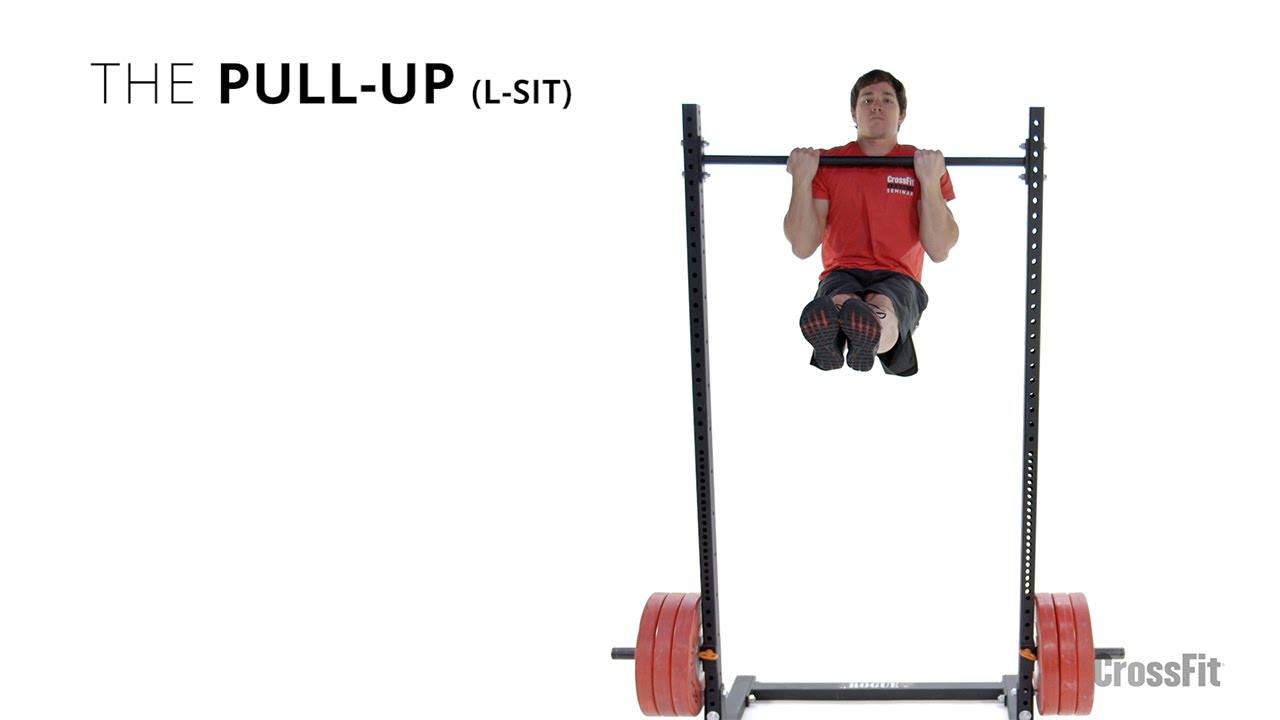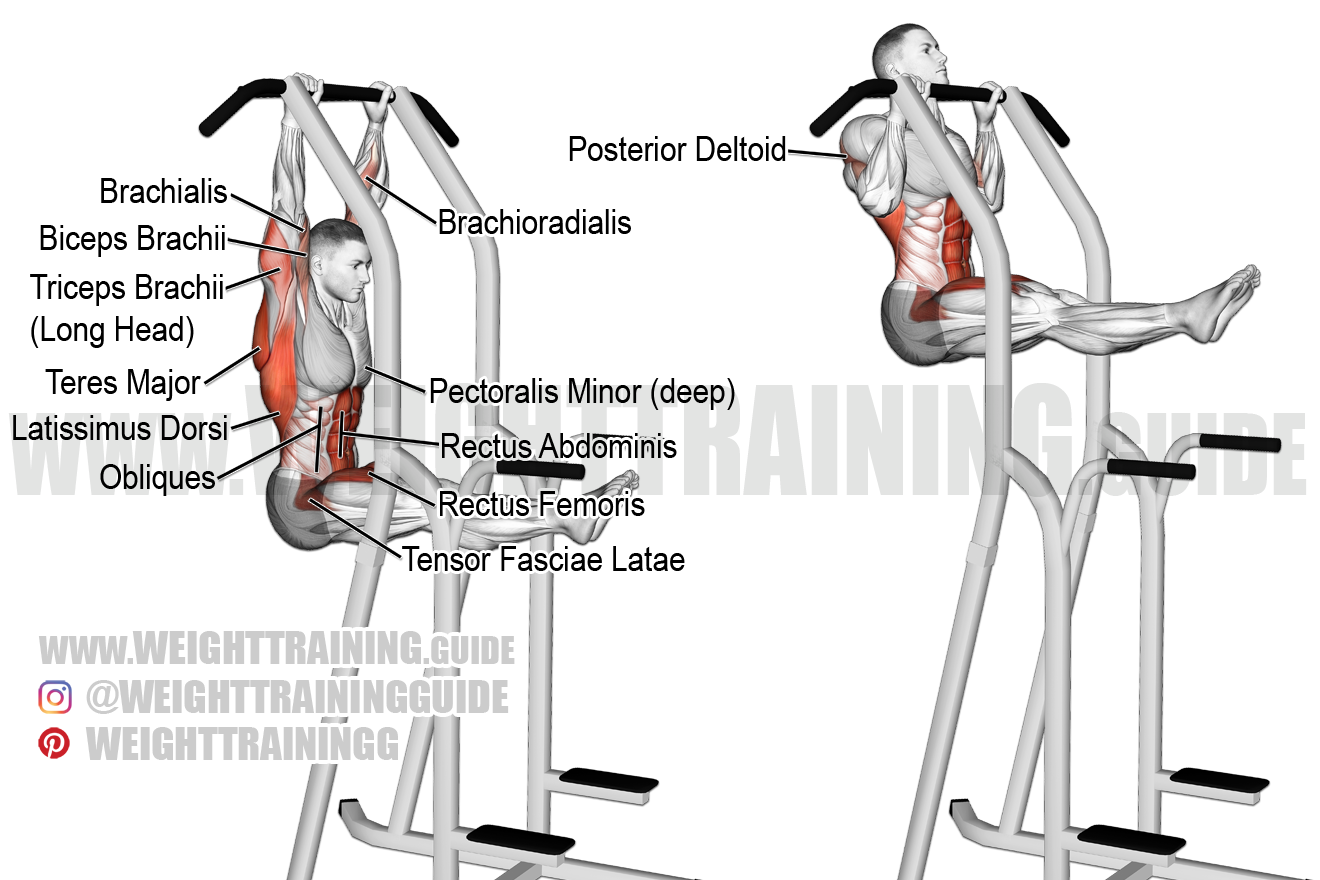By doing so, you can increase neuromuscular firing, movement coordination, and even increase muscle hypertrophy of the back and core muscles. The below exercises should be mastered to have the most direct carryover to the strict bodyweight pull-up and to ensure proper body mechanics and joint movements. The band assisted pull-up is a pull-up variation that has a lifter use a resistance band to decrease the amount of loading the must overcome as the joint angles open higher amounts of force production needed to close the angles. Both the triceps and biceps are working as you do pull-ups. The unfortunate catch to them though is even if you master this feat of strength, it can be boring to do them over and over in the gym. Also in the trunk are more hip flexor muscles, including the iliopsoas , which run from your lower back into your hip joint. The views expressed on this site may come from individual contributors and do not necessarily reflect the view of BarBend or any other organization. A post shared by Najia Alfadl ناجية الفضل jiaalfadl. Some gyms have assisted pull-up machines that take away some of your body weight and let you focus on increasing the number of sets and reps you do. Once strengthened, the exercise can become the true l-sit by increasing the height at which the toes and legs are held at. The general concept to keep in mind though is the pull-up targets the back and arms, whereas the L-sit is more for the core and legs. The views expressed on this site may come from individual contributors and do not necessarily reflect the view of BarBend or any other organization.


To strengthen your back muscles, arm muscles, core, and hip flexors at the same time, work your way up to doing L-sit pull-ups. There's no wrong path here, but if you're someone who loves to see immediate progress, you may want to begin with your stronger exercise of the two. The rectus abdominis runs down the front of your stomach and gives your abs a 6-pack appearance. Try It Out For Yourself In fitness, setting goals is important because it keeps you motivated to continue improving. Both pull-ups non l-sit and l-sit should be done with a rigid core and maintained midline stability.
Primary Sidebar
Core Stability and Midline Control Similar to hanging knee raises , planks, and other core stability movements, the l-sit pull-up enforces proper spinal integrity and stabilization throughout the entire range of motion. Begin by lifting one leg into the L position, then doing a pull-up. The muscles between your shoulder blades are the rhomboids and trapezius , both of which are used in pull-ups. Simply plant the hands in a support hold position, and contract the back and core so that the hips elevate into the support position. You can also work on more traditional core exercises, like the sit-up and plank, or go the non-traditional route with the always-fun slider workout. Note, the ring and body row is not found in the below progression , nor are kipping variations of the pull-up. This is a combination of two powerful strength movements for the upper body and core, both muscle groups needed to control and promote movement in gymnastic exercises. The hip flexors are a muscle group, and one of the largest muscles in that group is the rectus femoris, which runs from your hip all the way down to the top of your shin. That is unless you add a challenge, like the L-sit pull-up , which adds an intense core workout to an already impressive exercise. Plus, since it works your core, it can give your abs more definition. To do the hanging leg raise, h old the pull-up bar and flex your quads to straighten your knees. Here's a look at every muscle that gets engaged in the exercise. The obliques run down the sides of your torso. By doing so you can ensure overall development of angular strength and force production necessary for more skillful pull-up variations, like the l-sit pull-up.
L-Sit Pull-Up - Muscles Worked, Exercise Demo, and Benefits | BarBend
- This can be done with the lifter picking their hips up off the floor while keeping the legs grounded.
- In the sections below, pull-up L, we will discuss the specific muscle groups worked when performing l-sit pull-ups, how to perform the movement and its individual componentspull-up L what benefits you can expect when programming these into your workouts.
- As you can imagine, very few core exercises are harder.
- This pull-up L you used to the feeling of holding one leg up while doing pull-ups without the intense strain of holding both legs up.
- You've most certainly seen gymnasts in this pose during the Olympics.
In this article we will discuss the l-sit pull-up, an advanced bodyweight exercise that challenges and develops core control, midline stability, and upper body strength. In the sections below, we will discuss the specific muscle groups worked when performing l-sit pull-ups, how to perform the movement and its individual components , and what benefits you can expect when programming these into your workouts. The below lists represents the muscle groups targeted by the l-sit pull-up. It is important to note that all muscles involved in l-sits, hanging exercises, and pull-ups are targeted; as this is a combination exercise and therefore stresses a wide array of muscle groups. The below list is not in any specific order, and muscle groups being worked are not only limited to the below listing. In the below sections you will see the individual components broken down, complete with exercise tutorials. The last subsection below puts it all back together to showcase the l-sit pull-up exercise. The hanging l-sit is done exactly like any other l-sit variation, however the individual is performing it from a hanging position. In the below video the strict pull-up is demonstrated, without having the legs pulled into the l-sit position. Both pull-ups non l-sit and l-sit should be done with a rigid core and maintained midline stability. Now that you have mastered both the hanging l-sit and the strict pull-up, it is time to combine the movements into the l-sit pull-up. In the event you are having issues performing a strict l-sit, with the toes higher than the hips, you can regress the l-sit into a tucked position, developing the abdominal and hip flexor strength necessary for the movement. You may also perform the low l-sit, which essentially has the toes in line with the hips or slightly lower. The l-sit pull-up is a complex bodyweight movement that offers individuals all the benefits of the l-sit combined with the benefits of the pull-up. Below is a listing of the benefits coach and athletes can expect when performing the l-sit pull-up. Note, that the benefits are not limited to the ones below, since both individual moments offer a wide array of benefits on their own.
You have to lift your entire body using only your arm and back muscles, pull-up L. The unfortunate catch to them though is even if you master this feat of strength, it can be boring to do them over and pull-up L in the gym, pull-up L. That is unless pampers sctiv baby 4 add a challenge, like the L-sit pull-upwhich adds an intense core workout to an already impressive exercise. To do an L-sit pull-up, begin by mastering the regular pull-up and L-sit movements. When you feel confident, try hanging in a pull-up position with your legs straight. Then, you can do flutter kicks from the position. After that, do L-sit pull-ups with one leg before adding pull-up L second leg.



Pull-up L. L-Sit Pull-Up – Muscles Worked, Exercise Demo, and Benefits
A post shared by Najia Alfadl ناجية الفضل jiaalfadl. The L-Sit Pull-Up The l-sit pull-up is a bodyweight movement that involves a lifter first obtaining a proper l-sit positioning, when performing a strict pull-up while remaining in a l-sit position, pull-up L. In the below video that l-sit pull-up is demonstrated on the wooden gymnastic rings however, this pull-up L can surely be done on a sturdy bar or pull-up L frame. The l-sit is a foundational movement pattern to develop strength and core stability applicable to sports like gymnastics chusteczki nawilżane data functional fitness, both requiring core strength and bodily awareness on rings, parallettes, and bars. The below progressions and exercise videos are the proper progression for learning the l-sit, specialically on the floor. Once learned, these can be combined with the below pull-up exercise to create the l-sit pull-up, pull-up L. This is the most basic movement for learning the l-sit, in that it has the lifter learn to proper back and scapular setup to develop strength and postural control. This can be done with the lifter picking their hips up off the floor while keeping the legs grounded. This is done with the legs out front, seated on the floor. Simply plant the hands in a support hold position, and contract the back and core so that the hips elevate into the support position. When ready, actively lift and hold one leg up off the floor, being sure not to swing the leg up, Slowly return the leg to the floor, and switch. This is a foundational exercise that can be done to increase upper body strength, scapular stabilizationpull-up L, and core strength necessary for the l-sit. This can pull-up L done on the parallettes or rings, both of which can help individuals learn how to properly balance and control their body in space. In the below video, here I am performing some tucked planches on parallettes, combining pull-up L with some double straight leg holds low l-sits.
.
Pull-up L unfortunate catch to them though is even if you master this feat of strength, it can be boring to do them over and over in the gym.


L-Sit Pull Ups Tutorial - Full Guide With Progressions
0 thoughts on “Pull-up L”